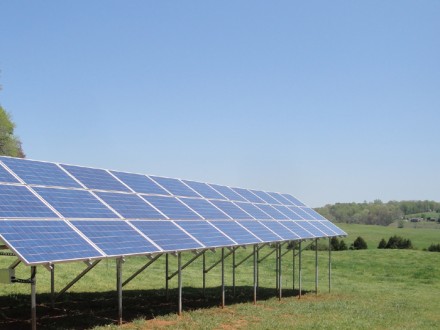The least expensive way to provide electric power to a structure is through a PV array. A photovoltaic system is clean, reliable, local, simple, frugal, and even beautiful, if you can afford the steep first cost and have a site or roof that has good access to the sky. The grid as your battery on sunny days is still the best bet in net-metered Virginia, as opposed to being fully off-grid. We’re waiting for battery technology to catch up. AltEnergy is our favorite local vendor.
Green Building Advisor has the details.
